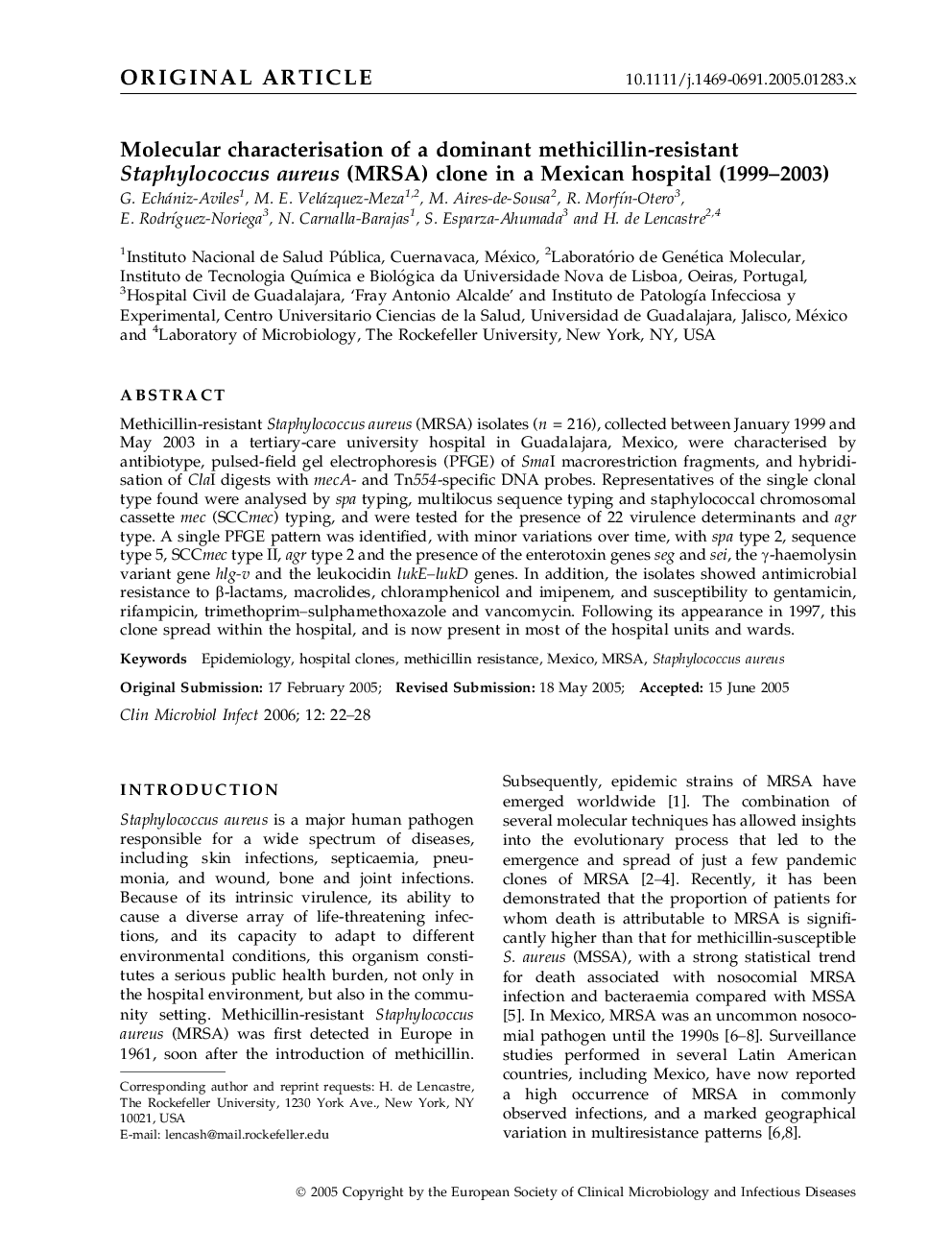| Article ID | Journal | Published Year | Pages | File Type |
|---|---|---|---|---|
| 3398379 | Clinical Microbiology and Infection | 2006 | 7 Pages |
ABSTRACTMethicillin-resistant Staphylococcus aureus (MRSA) isolates (n = 216), collected between January 1999 and May 2003 in a tertiary-care university hospital in Guadalajara, Mexico, were characterised by antibiotype, pulsed-field gel electrophoresis (PFGE) of SmaI macrorestriction fragments, and hybridisation of ClaI digests with mecA- and Tn554-specific DNA probes. Representatives of the single clonal type found were analysed by spa typing, multilocus sequence typing and staphylococcal chromosomal cassette mec (SCCmec) typing, and were tested for the presence of 22 virulence determinants and agr type. A single PFGE pattern was identified, with minor variations over time, with spa type 2, sequence type 5, SCCmec type II, agr type 2 and the presence of the enterotoxin genes seg and sei, the γ-haemolysin variant gene hlg-v and the leukocidin lukE–lukD genes. In addition, the isolates showed antimicrobial resistance to β-lactams, macrolides, chloramphenicol and imipenem, and susceptibility to gentamicin, rifampicin, trimethoprim–sulphamethoxazole and vancomycin. Following its appearance in 1997, this clone spread within the hospital, and is now present in most of the hospital units and wards.
